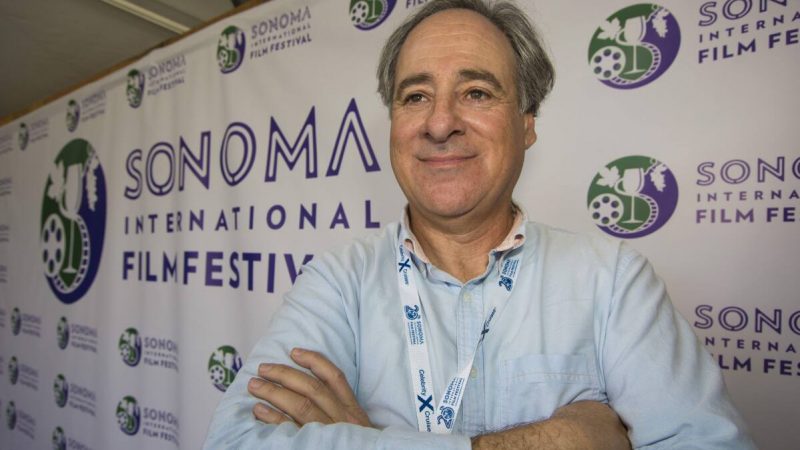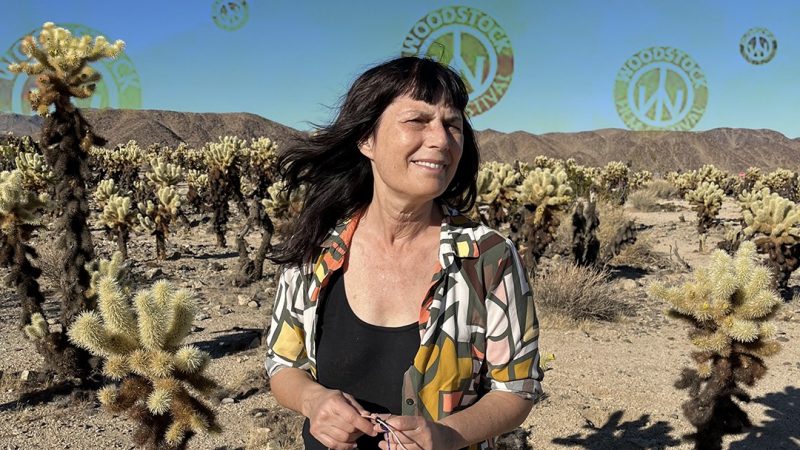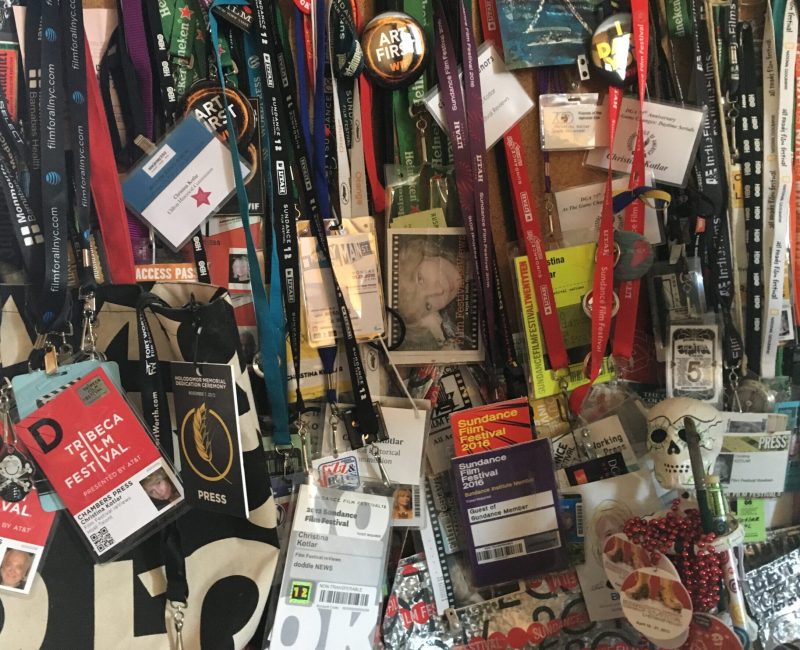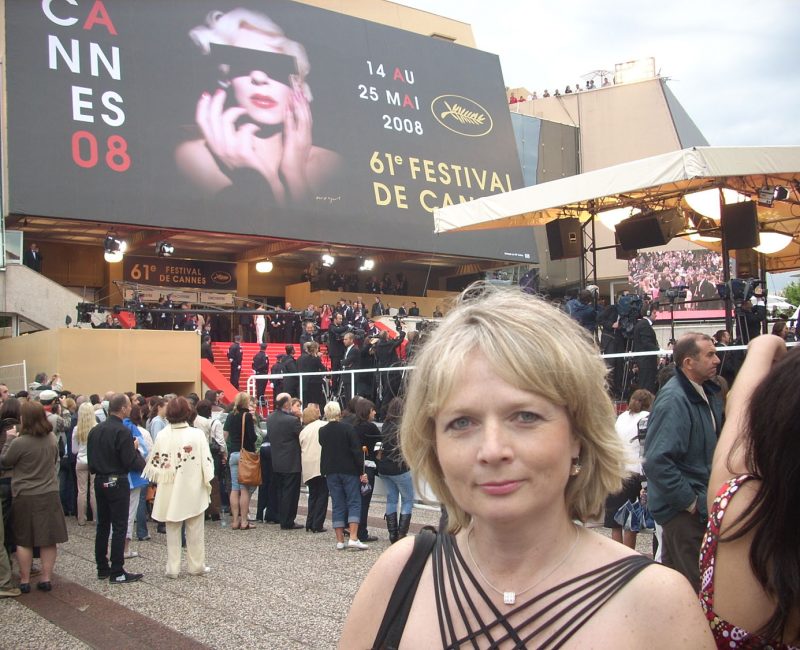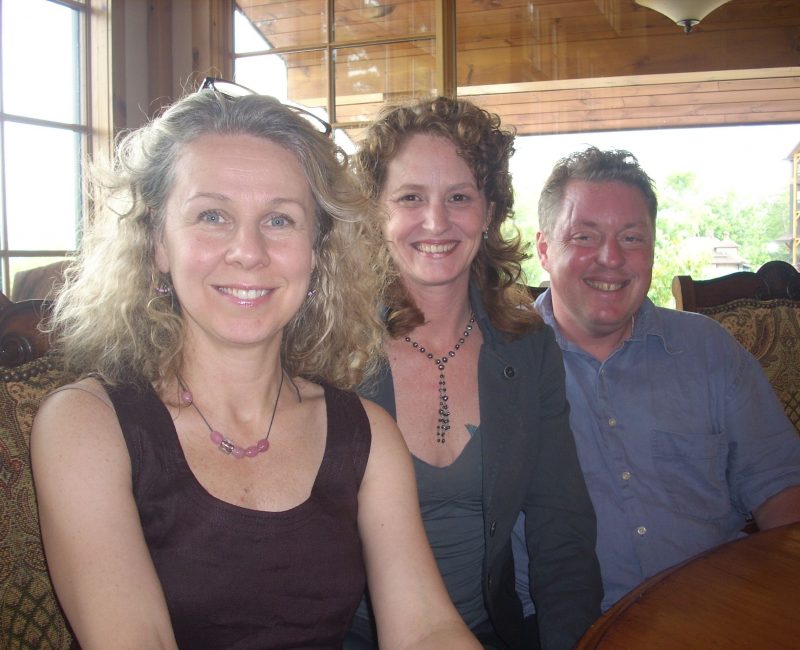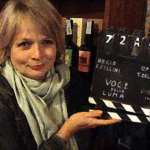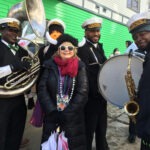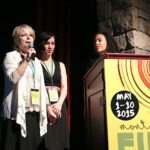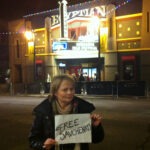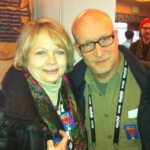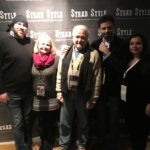Going to Woodstock Film Festival is like going to your summer place, your country home, your neck of the woods, literally. It’s a pleasure to return to the Upstate areas in the early fall, as the season and weather change, into a familial vortex of indie films and filmmaking connecting artists, fiercely independent mavericks with worldly, film-loving, film festival organizers and appreciative audience.
A happy destination festival with an established brand, loyal sponsors, a walking around town with cultural events, and contemporary programming vision amid an artsy ‘60s atmosphere. It’s been a while since “command central” moved from a rustic outpost with an apple cider, autumn leaves atmosphere that had a fireplace going on those crisp, drizzly, cold snaps into a light, and airy open space, a contemporary art gallery in the center of town. Several venues and the Box Office –just around the corner – are within walking distance allowing new arrivals to orientate themselves, survey the main drag, Tinker Street, scope out the shops, and find the right choice for dining pleasure.
On nice days, it’s a wonderful walk to the Woodstock venues– the Woodstock Playhouse and the Upstate Films Woodstock. I even made it to Bearsville Theater once, almost turning into the Byrdcliffe Artists Colony; however, without a shuttle service of some sort, you need a car and more so, the understanding of how and where to park your car. Respecting businesses parking areas so as not to cause any more unsettling during the several days of a film festival for people who live and work there. It’s only challenging if you are completely unfamiliar with the layouts and did not check in advance the maps, transportation, accommodations info offered online.
This year, those logistic calculations determined my choice of film schedule. Remaining in Woodstock worked well for my limited time instead of branching out to the other theaters in Kingston, Rhinebeck, Rosendale, and Saugerties. It allowed a more relaxed, three-film-in-a-row, plus event schedule for the day. I got to see some great films that fit into my research for mastering the art of the film festival experience into the business of culture.
The story of the Mass MoCA in Museum Town, a High Line-type project where a long-time factory employer, a local electric company, closed in 1984 sending North Adams, MA, into an economic depression. First-time filmmaker, Jennifer Trainer is part of the story, one of a group of visionaries transforming the deteriorating structure into one of the world’s largest contemporary art museum. After the film, she talked about taking risks, having a gutsy mayor, local support, raising money, curator boldness, and having a great soundtrack. One of the key moments reveals musician/artist David Byrne willingness to step up and promote a cause for contemporary art.
It seems the (violin) strings of music in film and musicians in the film became a theme in other films like Speed of Life, described as a quirky, heartfelt film about the impact the sudden death of David Bowie had on a young couple. A more suitable title might have been, A Crack In the Universe after David Bowie Dies Opens into Magical Realism. It hits the right notes. The best part was a live musical performance by Robert Burke Warren, whose voice and acoustic guitar, with an especially lovely tone, was an excellent opener before the film. He played several Bowie tunes invoking images of Major Tom/Ground Control and BTW, whose shirts is he wearing? out of the Ziggy Stardust and the Spiders From Mars album. I’m sure the majority of the audience was transported back into the day, as I was sifting between a Bowie concert at Giants Stadium, his duet with Bing Crosby, or his interview on MTV where he asked a VJ why there are not more black musicians on MTV. When given a convoluted explanation that music that is not rock and roll does not get played, David Bowie looked at him with very cool, half-closed eyes, “Interesting.”
That’s not all. I personally time-traveled at the I want my MTV screening– back to August 1, 1981, standing on the edge of a major consumer seismic shift in the way we access the music we wanted to listen to any time, all the time. I am a witness and willing participant because we had Cablevision. It was back in the day– mid-1960s– when now billionaire, Charles Dolan built a cable system business in NYC, launched HBO (Home Box Office), the first premium programming service which played mostly American-made indie films and some foreign, likened to the “soft porn at midnight” hour. After selling HBO to Time/Life, he started Cablevision and took it into the suburbs. That’s how we had MTV in Clifton, New Jersey. It wasn’t everywhere because of the sporadic cable company territories and the wiring technology necessary for expansion. Nonetheless, it made an IMPACT. Their famously infamous “I want my MTV” campaign to push for more expansion catapulted the nascent music video industry into the outer territorial stratosphere of moneymaking in the music business with the cable industry exploding.
I hate to admit the nostalgia feeling. I am trying to shed it like snakeskin, but I must say, watching the last thirty five+ years of music videos I loved, I can recall every video frame, edit in my mind how I would have done it differently, noting when my top favorites might be playing because you can figure out the rotation schedule after a couple of viewings. I had a Google analytics mind in the making even back then. Producer Nick Quested arrived a few minutes after the music under video rolling credits and our leftover group of ardent MTVers, or just the generational curious, had an outstanding back-and-forth with him. Nick had shot many music videos and was privy to moments that audiences deem enviable and the great thing about him was that he became part of the group that share this amazing history with the generation who lived the years and future generations who will remember it as one of those moments, milestones in the history of our music culture. Kudos to everyone involved in this project. I loved that they included the David Bowie interview about race. He was a class act and a humanistic artist and music contributor for the good of the human race.
The film that made the most impact on me was the World Premiere of The Condor and the Eagle, opening with an Indian incantation, it is a film about the treaties and unity the indigenous people from North, Central, and South America have taken the fight for climate justice to the streets and onto the big screen– an outreach to save the planet, Mother Earth. After the screening, a final prayer that includes all humankind in this struggle. As executive director and co-founder of Woodstock Film Festival, Meira Blaustein remarked during the introduction, the film came to Woodstock film programmers very late in its festival schedule, but it was a film you couldn’t say no to, and they found a way to integrate this work of climate journalism as a World Premiere that included a special invocation by indigenous people after the screening. One of their strongest connections is the forest in the Woodstock area was mentioned as a revered place for Nature’s way for artists to converge on this spot and share their visions of being. I couldn’t agree more. Woodstock Film Festival fulfills its capacity as a bona fide high-end film festival experience. Congratulations on twenty years of being fiercely independent and looking forward to years to come. Stay the course. Take risks. Dream big. Fight hard. Fiercely Independent.


